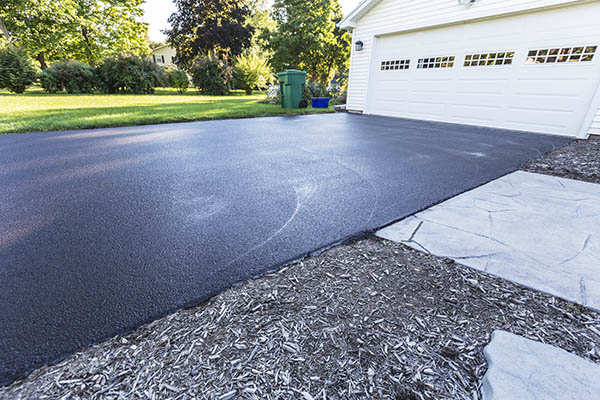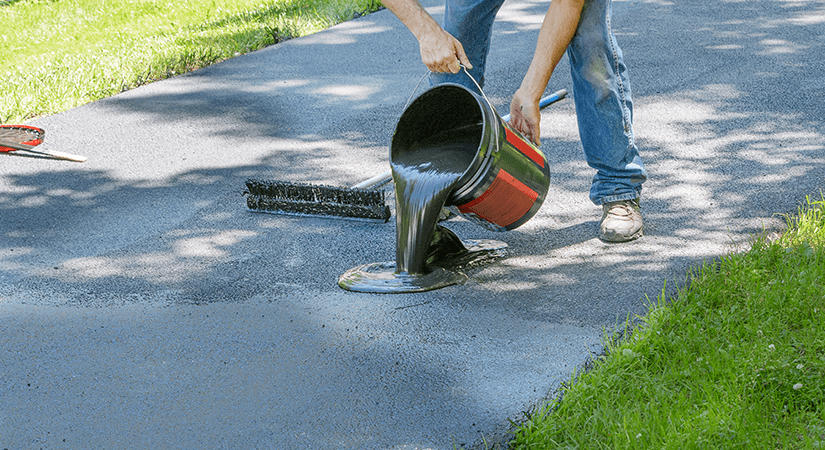Grasping Tilted Parking: How Asphalt Sealing Boosts Business Lots
Hot Mix Asphalt: A Sustainable Solution for Pavement
Warm Mix Asphalt (HMA) has arised as a leading sustainable selection for sidewalk services, offering a myriad of ecological benefits and cutting-edge innovations. As the demand for eco-friendly building and construction methods expands, checking out the subtleties of HMA's sustainability can offer valuable insights right into the future of pavement remedies.
Ecological Advantages of Warm Mix Asphalt

Additionally, Warm Mix Asphalt helps to minimize metropolitan warmth island impacts. Its dark shade absorbs sunshine, minimizing the amount of heat showed back right into the environment contrasted to lighter-colored pavements. This can decrease ambient temperatures in city areas, lowering the demand for a/c and ultimately lowering energy usage.
Additionally, Hot Mix Asphalt adds to improved stormwater monitoring. Its permeable nature allows water to recharge and infiltrate the sidewalk groundwater products, reducing overflow and the danger of flooding. These ecological benefits make Hot Mix Asphalt a sustainable selection for leading highways and roads.
Energy Effectiveness in HMA Manufacturing
Is energy efficiency a vital variable in the production of Hot Mix Asphalt (HMA)? Energy plays a substantial role in the manufacturing of HMA, influencing both expense and ecological sustainability. One key aspect of energy efficiency in HMA manufacturing is the usage of cozy mix asphalt (WMA) technologies.
Furthermore, improvements in plant modern technologies have actually resulted in even more energy-efficient HMA manufacturing processes. Modern plants are developed with features like recycled asphalt pavement (RAP) handling capacities, reliable burner systems, and enhanced insulation, all adding to power financial savings. By maximizing energy use in HMA production, the market can reduce its carbon footprint while preserving top quality sidewalk materials. Energy efficiency is, therefore, a crucial consideration in ensuring the sustainability of Warm Mix Asphalt manufacturing.
Recyclability of Hot Mix Asphalt
The recyclability of Warm Mix Asphalt (HMA) is a crucial facet of its sustainability and lasting environmental impact. HMA is one of the most recycled products in the United States, with over 100 million lots of recovered asphalt sidewalk (RAP) being reused annually in new pavement building. Reusing HMA supplies numerous ecological benefits, such as lowering the demand for virgin materials, lowering energy usage throughout manufacturing, and reducing the quantity of waste sent out to land fills.
The procedure of reusing HMA involves crushing the existing pavement, squashing it into smaller sized items, and mixing it with brand-new aggregate and asphalt binder to develop a recycled mix. This recycled mix can often carry out in addition to and even better than traditional HMA, while requiring less basic materials and producing reduced greenhouse gas discharges. By integrating RAP into brand-new pavement jobs, road agencies can preserve natural sources, lower prices, and decrease the ecological impact of roadway building and construction and upkeep tasks. In general, the recyclability of HMA plays a significant duty in promoting sustainable practices within the pavement sector.

Long-Term Efficiency of HMA
Asphalt sidewalks demonstrate longevity and resilience over a prolonged duration, mirroring the long-term efficiency of Warm Mix Asphalt (HMA) The long life of HMA can be associated to its capability to withstand rush hour loads, extreme climate conditions, and the impacts of aging. Research studies have shown that properly designed and correctly created HMA pavements can last for 20 years or more with regular upkeep. The secret to maximizing the long-term efficiency of HMA depends on utilizing high-grade materials, complying with best methods in building, and executing effective maintenance techniques. Correct drain, routine examinations, and prompt repairs are important for preserving the architectural stability of HMA sidewalks gradually. Additionally, developments in HMA technology, such as using polymer-modified binders and warm mix asphalt, have better enhanced the durability and longevity of HMA sidewalks. By prioritizing next page quality building and maintenance practices, HMA proceeds to show itself as a affordable and sustainable solution for resilient pavement facilities.

HMA: Toughness and Sustainability
Showing both toughness and sustainability, Hot Mix Asphalt (HMA) has actually come to be a Website foundation in the building of long-lasting pavement facilities - regrading. HMA's toughness stems from its ability to endure hefty tons, severe weather, and high web traffic quantities, making it a trustworthy choice for highways, highways, and airport runways. The structure of HMA, which generally consists of aggregates, binder, and filler, plays a critical role in improving its long life and resistance to tear and put on
Additionally, HMA's sustainability hinges on its recyclability and energy-efficient manufacturing procedure. The ability to reuse redeemed asphalt pavement (RAP) in new HMA blends lowers the demand for virgin materials and decreases the environmental effect of sidewalk construction and maintenance. Furthermore, the power efficiency of creating HMA depends on its reduced blending temperatures compared to other sidewalk materials, bring about reduced energy consumption and greenhouse gas exhausts.
Verdict
In verdict, hot mix asphalt (HMA) supplies a sustainable option for pavement with its environmentally pleasant features. HMA's recyclability, power efficiency browse around this site in production, and long-lasting toughness make it a green option for road building and construction.
HMA is one of the most recycled products in the United States, with over 100 million tons of redeemed asphalt pavement (RAP) being recycled yearly in new sidewalk building and construction.The process of reusing HMA entails grating the existing pavement, squashing it into smaller sized pieces, and blending it with new aggregate and asphalt binder to develop a recycled mix.Asphalt pavements show longevity and durability over a prolonged duration, mirroring the long-term efficiency of Warm Mix Asphalt (HMA) Additionally, innovations in HMA innovation, such as the usage of polymer-modified binders and warm mix asphalt, have actually better boosted the toughness and longevity of HMA pavements. The capacity to reuse redeemed asphalt pavement (RAP) in new HMA combinations reduces the need for virgin products and minimizes the ecological impact of pavement building and construction and upkeep.